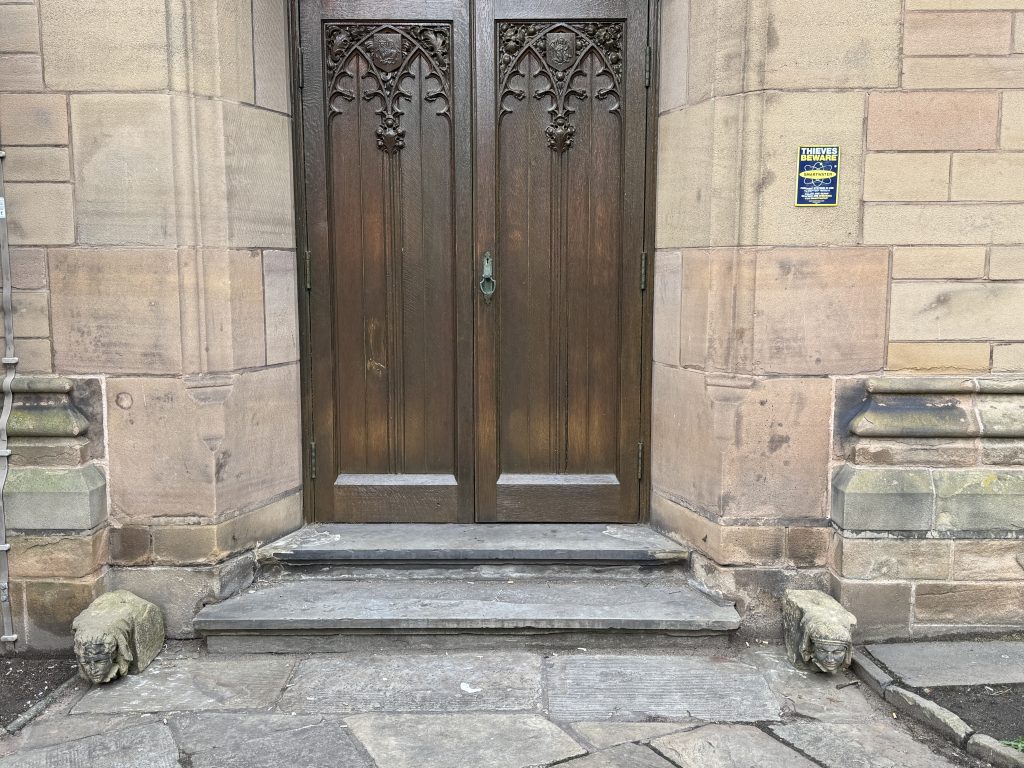Green Space
The Churchyard was first allowed by the Bishop of Lichfield and Coventry in 1361 and
remained in use as the principal ground in Liverpool until 1849.
The shipowner James Harrison, who founded Harrison Line in 1853, was the benefactor of the new Gardens. On 17 May 1892 a Deed of Faculty was granted for the laying out of the graveyard as an ‘Ornamental Ground’ by forming walks and making beds of shrubs or plants surrounded with turf. The newly laid out garden was given into the care of the Corporation of Liverpool – subject to conditions to be approved by the council and that “the proposed alterations will be a public benefit and make the said churchyard more comely and decent”. It is today designated a Protected Green Space and is part of the Castle Street Conservation Area.
Although some graves were later moved to Walton Park Cemetery (which still forms part of the benefice of Liverpool Parish), many graves still lie under the gardens. Some of the paving stones in the Gardens were once tombstones, but fixed to the wall is the elaborate headstone of John Roscoe (d. 1773) and his wife Mary as a reminder that this is still a graveyard. The burial registers also reveal the first written record of a black resident of the City: Abell, who was enslaved to a Mr Rock, was buried on 1 October 1717 and was commemorated by a memorial stone laid in 2020.
Sundial
The sundial near the flagpole was presented to the Church in 1984 by the Royal Institution of Chartered Surveyors Merseyside and Isle of Man Branch when the Gardens were refurbished.
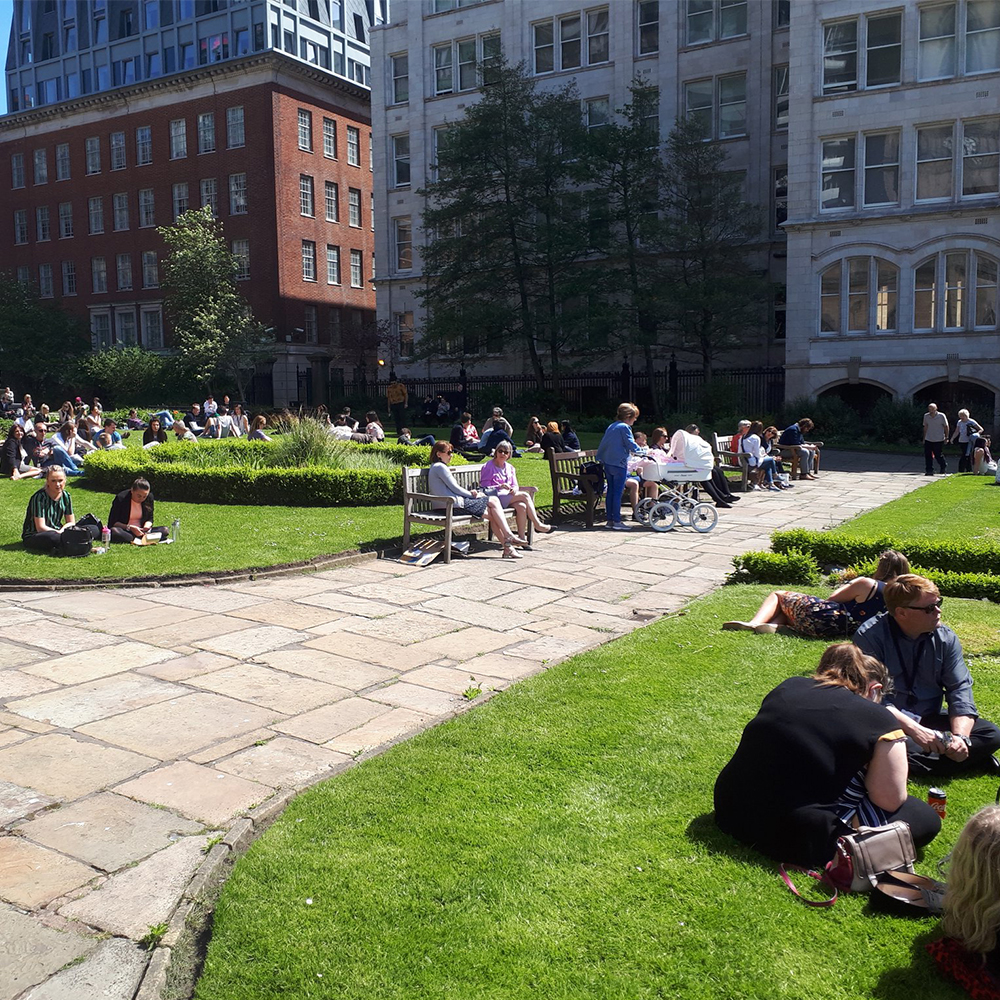
Maritime Memorials
The Gardens are the home of a number of memorials which link the Church with seafaring. As you enter the Gardens from the Church forecourt you see the bell from TSS Sarpedon, a cargo liner of the Blue Funnel Line built by Cammel Laird and launched in 1923.
In the south west of the Gardens there is a plaque commemorating HMS Liverpool (whose bell is in the Maritime Chapel in the Church), and another plaque remembering the Atlantic Conveyor, a Cunard ship which went down in the Falklands War in 1982 with the loss of 12 lives.
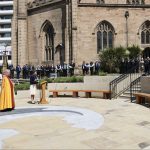
Battle of the Atlantic Garden of Reflection
This is the first national memorial to the Battle of the Atlantic (incorporating the Arctic Convoy Memorials). The Battle lasted the duration of the Second World War, when convoys of merchant ships, supported by the Royal Navy and RAF, as well as international forces, brought vital supplies to Britain. The Garden was opened by HRH the Princess Royal on 26 May 2023 as part of the 80th anniversary celebrations of the Battle of the Atlantic.
MV Derbyshire Memorial Garden and Sculpture
This memorial commemorates the 44 lives lost on the MV Derbyshire when it sank in the South China Seas on 9 September 1980. The Derbyshire was a Liverpool ship, crewed by Liverpool seafarers, and owned by Bibby Line. She remains the biggest British registered merchant ship ever to have been lost at sea. The Garden was opened in September 2018 by Lord Prescott of Hull and dedicated by the Bishop of Liverpool.
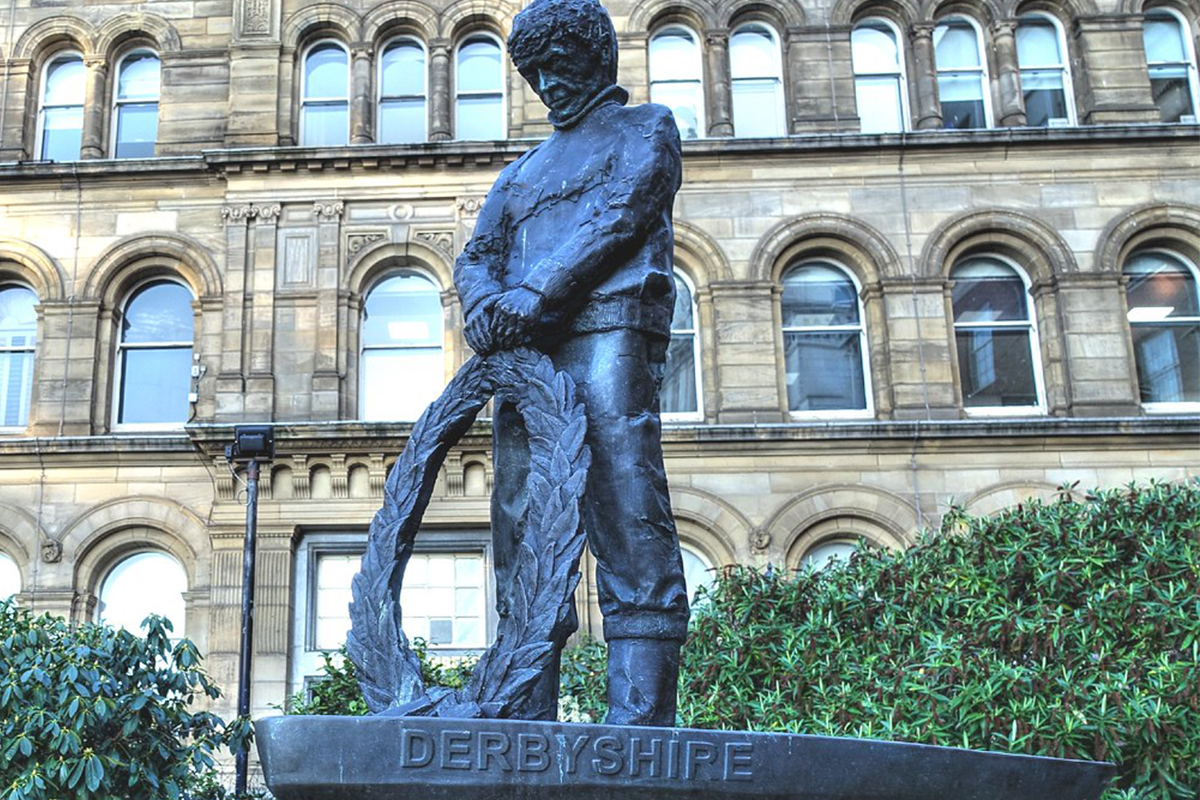
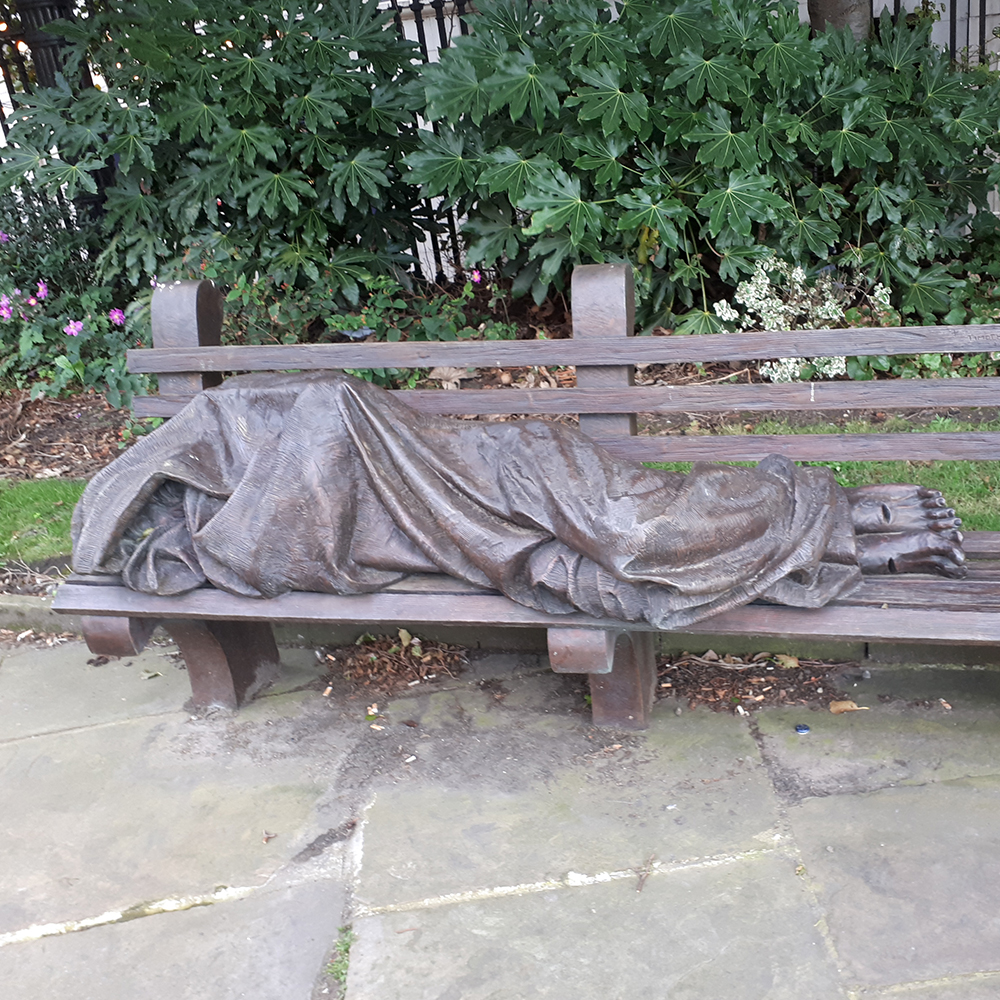
Homeless Jesus Sculpture
The ‘Homeless Jesus’ sculpture was installed in April 2019 as part of a major Conference which the Parish Church hosted to engage the business sector in the problems of homelessness. This sculpture is known across the world, and there are copies of it from Washington DC to Florence, and even one in Manchester. The sculpture was made by Canadian artist Timothy Schmalz who explained how he would like the sculpture to be seen: “I am grateful for this installation of the Homeless Jesus in Liverpool. The work is being installed in cities all around the world, I see them forming a bronze chain that links us all with the common hope of a more companionate world. Hopefully when one walks by this sculpture it will be like getting a slap in the face, making one think of the sacredness of all. Hopefully when a homeless human walks by, it will be an embrace. Christianity is hardcore.”
Homeless Jesus Sculpture
The unveiling of the sculpture was done by residents and service users of Liverpool YMCA and it was blessed by the Bishop of Liverpool. The only interpretation offered by the sculpture is a Bible verse inscribed into a flagstone: “I was a stranger and you welcomed me” (Matthew 25).
Victoria Cross Walkway
Along the edge of the churchyard wall are four stones laid to mark the centenary of action which led to the award of the Victoria Cross in the First World War. There are a number of similar stones across the City, but these stones are for men who were born near the City Centre or who had a maritime connection.
They are:
* Albert White VC (for action on 19 May 1917) more information here
* William Ratcliffe VC (for action on 14 June 1917) more information here
* Hugh Mackenzie VC (for action on 30 October 1917) more information here
* Cyril Gourley VC (for action on 30 November 1917) more information here
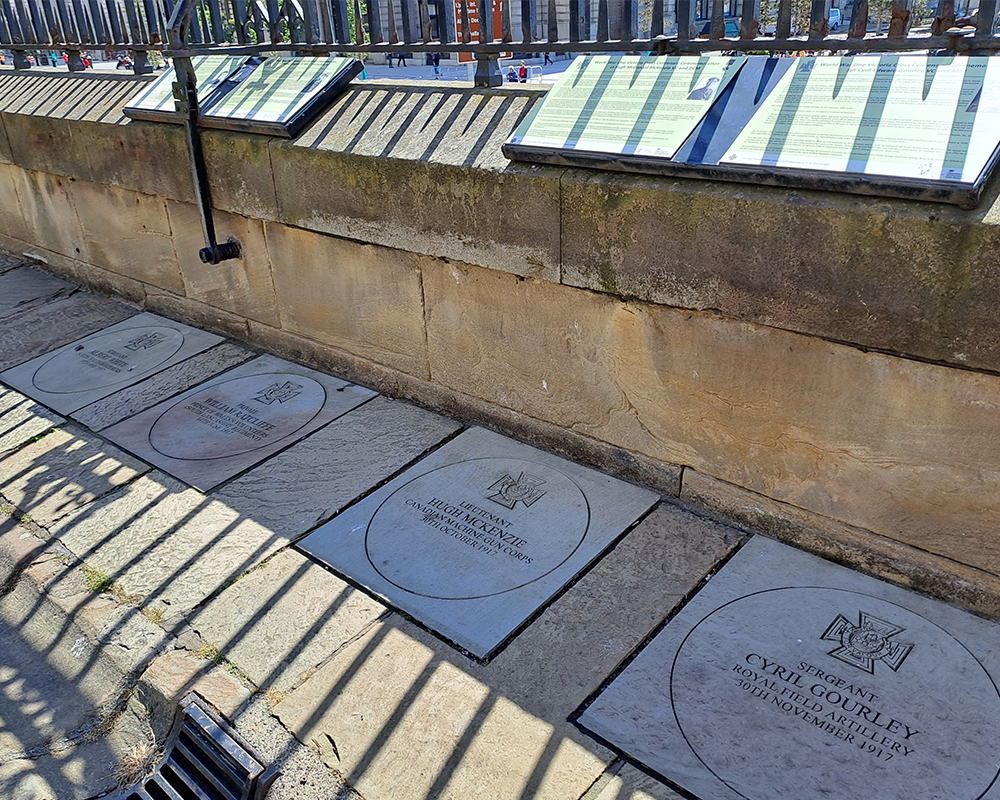
Liverpool Blitz Memorial
During the Blitz of 1940-1, when much of the church was destroyed, over
1,700 residents of Liverpool and Bootle were killed by bombing. In 2000 a
bronze memorial was unveiled in the Church Gardens by the Duke of Edinburgh.
The sculptor, Tom Murphy, wrote of the memorial:
Each person will interpret the sculpture from their own knowledge and
perspective. However,the key elements include:
- The mother who is clutching her baby while frantically trying to encourage her young son to escape down the staircase to a safer place.
- The small boy playing with his aeroplane, standing precariously at the top of the stairs, lost in the excitement of war.
- The abstract staircase, shrinking as it rises, symbolising the diminishing option for the family group.
- The staircase also indicates the way bombs spiral as they fall.
- Each step of the stairs has jagged cut outs, which give the transient effect of shards of glass, particularly on a sunny day, when they can be seen within the shadows cast by thesculpture.
- The aeroplane held by the small boy can be seen both as the instrument of de struction, or as a Cross in Remembrance of those who sacrificed their lives during the Blitz.
The names of those who died in the Blitz are recorded inside the base of the
sculpture. A copy of this list is held in the Church Office.
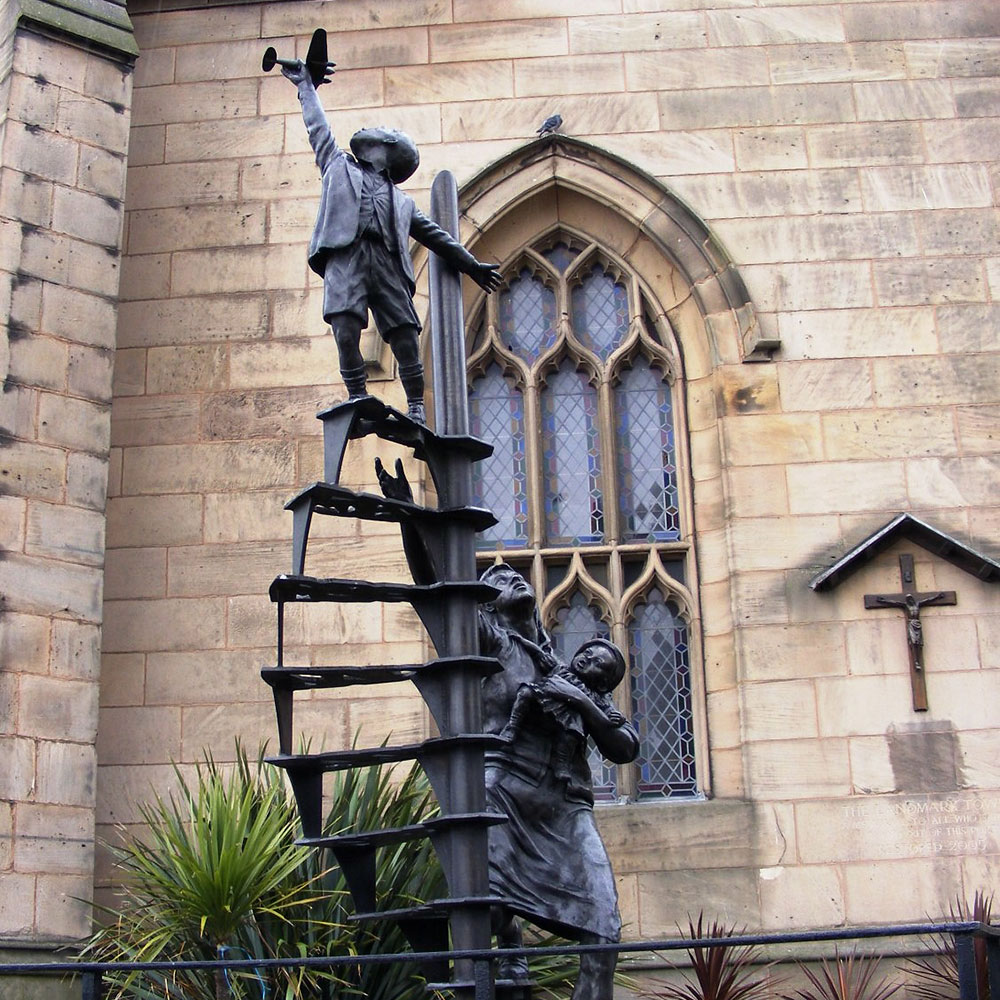
Decorative Stone Heads from the Old Church Building
Following the bombing of the Church in 1940/41 the rubble was cleared leaving only the walls. When construction of the new church began, the walls were removed in 1949. These two stone heads were salvaged from the rubble and became garden ornaments in Thingwall on the Wirral.
In the 1960s they were recognised by Betty Hitchman who had grown up on the Pier Head as the daughter of James Stafford, the Piermaster.
The heads were presented to Betty, and her daughter, Jane Antley, kindly returned the heads to the church in 2024.
The heads are likely to date from the rebuilding of the church in 1775 and were situated either side of a door, probably one of the doors at the west end of the building.
